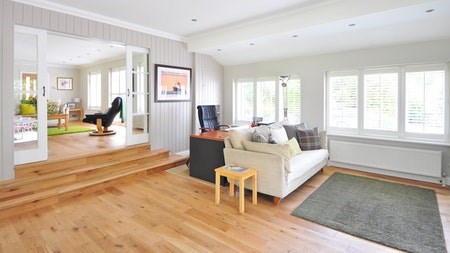Purchasing a house can be one of the most dauting and yet one of the most rewarding decisions you can ever make. While reasons for purchasing property can vary from prestige, financial security and investment, the bottom line is property and house purchasing is a secure and profitable way to spend one’s income. There is a general term in the real estate industry which many people may have come across and not even understood. It’s called house flipping and there is a 70% rule of house flipping.
What is house flipping?
House flipping is when a real estate investor buys houses and then sells them for a profit. In order for a house to be considered a flip, it must be bought with the intention of quickly reselling. The time between the purchase and the sale often ranges from a couple months up to a year.
Flipping houses can be immensely rewarding if you go about it sensibly, practically and with sound financial backing. To the contrary, house flipping, if not done well can prove disastrous with possible financial losses.
When and how does house flipping happen?
Profits from flipping real estate come from either buying low and selling high (often in a rapidly rising market), or buying a house that needs repairing and fixing it up before reselling it for a profit ("fix and flip").
Under the "fix and flip" scenario, an investor or flipper will purchase a property at a discount price. The discount may be because of:
• the property's condition (e.g., the house needs major renovations and/or repairs which the owner either does not want, or cannot afford, to do), or
• the owner(s) need to sell a property quickly (e.g., relocation, divorce, pending foreclosure).
The investor will then perform the necessary renovations and repairs, and attempt to make a profit by selling the house quickly at a higher price. The "fix and flip" scenario is profitable to investors because the average homebuyer lacks the time and funds to do repairs and renovations, so they look for a property that is ready to move into.
What is the 70% Rule of House Flipping?
The 70% rule says that an investor should spend no more than 70% of a property's After Repair Value (ARV) on a property. This includes the price you pay for the property itself as well as any estimated repair costs.
ARV is the estimate of a property’s value after all repairs and upgrades are completed. It calculates the margin between a property's present-day value, and the property's value once it has been renovated.
The 70% rule is a back-of-the-envelope rental property calculation and has its limitations, but it's a good starting point. The idea is that chopping out that 30% will leave room for both your profits and miscellaneous expenses.
How to calculate
To use simple math, if a property’s ARV is R100,000, and it needs R25,000 in repairs, then the 70% Rule suggests that the most an investor should pay for it is R45,000: R100,000 times 70% = R70,000, minus R25,000 = R45,000.
((Property's ARV) x 0.7) - Repairs cost = Highest amount you should pay for the property.
It’s important to note that, the word “rule” is a misnomer – it’s a loose guideline that is meant to offer a quick shorthand for a frame of reference, but should be followed up with detailed analysis before actually making a purchase. Sometimes you may only want to offer 60% of the ARV. Or in other cases, it makes more sense to offer 80% or 85%.
Determinant costs to bear in mind
The house flipper must not forget to calculate the following costs:
• Repair Costs
• Buying Costs
• Holding Costs
• Selling Costs
• Financing Costs
• Desired Profit
What should be considered as you apply this rule?
Market price point
In lower-end property markets, you’ll run into additional expenses and risks that should impact your investing strategy. For example, you may have a high risk of break-ins, vandalism, stolen equipment, and appliances.
Exit strategy
While the 70% rule can be a useful shorthand for flipping houses, it’s less useful for other exit strategies. Rental investors may not be renovating the property as extensively and will be holding the property long-term.
Labour and your target profits
Some deals require more work on your part than others. If you find a deal that will involve minimal work and a quick turnaround with a buyer already in place, you may be willing to accept a lower profit margin on the deal and pay more than the 70% rule would dictate.
The 70% rule in real estate makes for an instant, back-of-the-napkin calculation to give you a rough ballpark figure for a ceiling price on your offers. The most important thing to remember when using the 70% rule, is to be cautious and conservative with your repair costs and ARV estimates.


